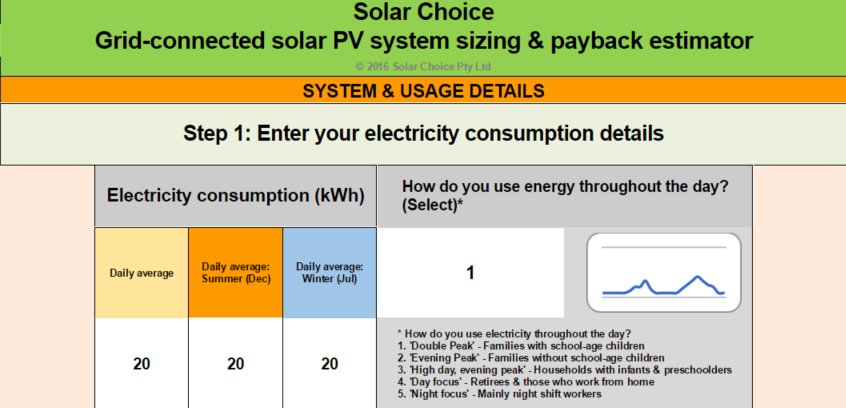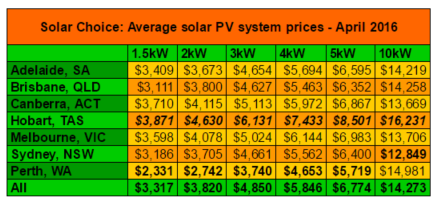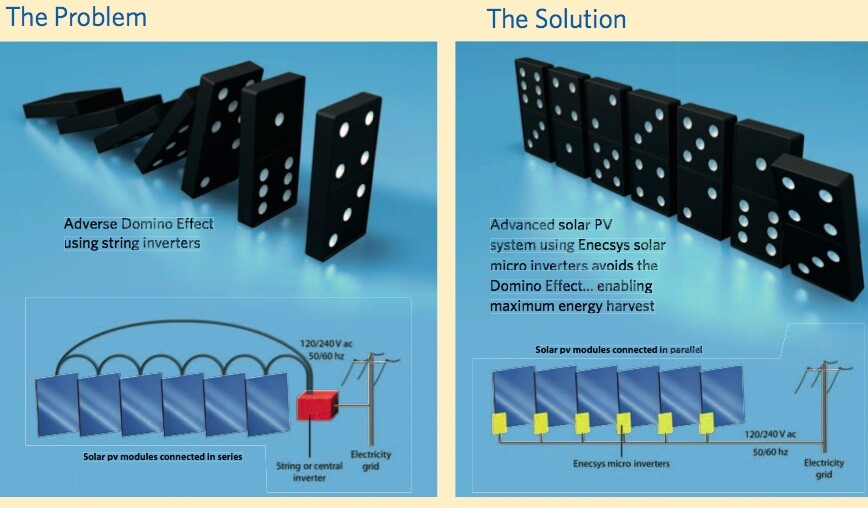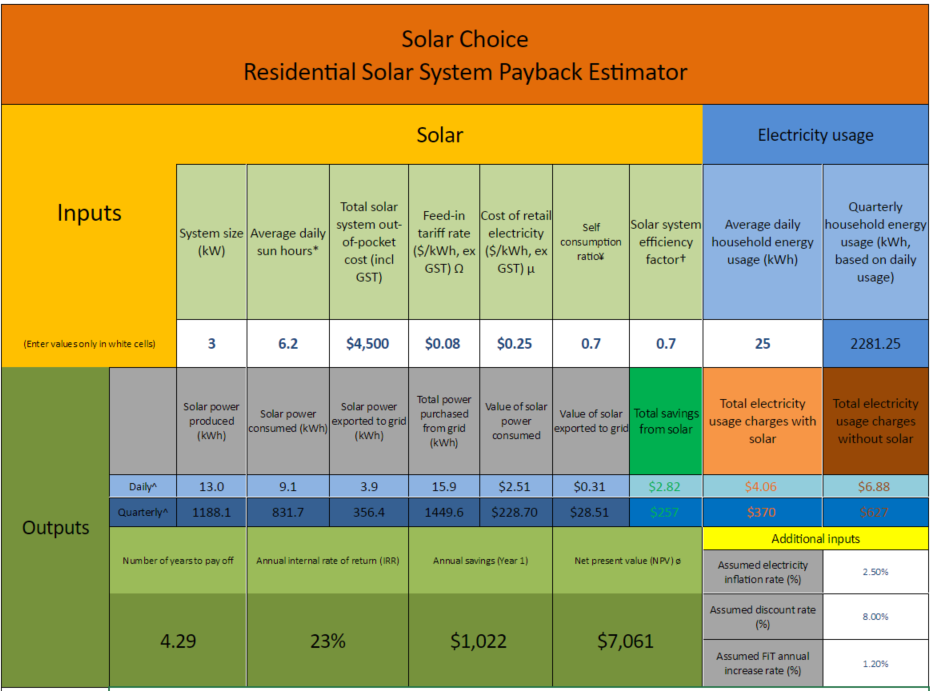Going solar is still a no-nonsense investment options for homes across Australia, with payback periods as short as 2-3 years in the right circumstances. This is due in great part to the fact that Australia is home to some of the lowest residential solar system installation prices in the world – making solar panels relatively low-risk and attractive.
But as with anything, shoppers will do themselves a favour by knowing their market. Just like a new car, television or refrigerator, different brands and products have different reputations for reliability and performance. Becoming well-informed enough to choose the right installer, products and systems size also requires you as a shopper to ‘know thy self’. This allows you to protect yourself from – among other things – falling into a situation in which you are sold a PV system that is too large for your needs (which, sadly, does happen).
Below, we’ve compiled a list of ‘good habits’ which the more discriminating shoppers cultivate in order to avoid the pitfalls of their less-informed peers.
1. Be clear in your goals
Why do you want solar? Some people do it purely for the clean energy cause, while others do it only to save money (and couldn’t care less about the environmental benefits). Most solar shoppers, however, are somewhere in between: happy to do the right thing as long as they also come out ahead financially, even if only marginally so. Fortunately, the conditions around Australia are such that it’s pretty easy to achieve both of these goals – as long as you know what you’re looking for. (Also, if you’re interested in battery storage and/or going off grid, you might want to check out this article.)
2. Know your energy usage – and choose your system size accordingly
Assuming that you’re looking into solar as a way to save money, it’s integral that you understand how solar works in post feed-in tariff Australia. These days, homes that go solar receive virtually no reward for exporting their excess solar energy to the grid – in most states, most retailers now offer only 6-8c/kWh. (Contrast this with the 60c/kWh and 44c/kWh which were once mandated by state governments to be paid out to solar homes.) While this fact is a source of ire for many solar system owners, thanks to its affordability (Australia is home to some of the lowest installation prices in the world) rooftop solar still makes plenty of financial sense – provided that the system is sized to meet daytime household energy demand and not produce too much ‘excess’ energy.
How many kilowatts (kW) of solar do you need? That depends on how much electricity your household consumes and when you consume it. Different homes use electricity differently throughout the day; for example, a childless working couple would usually see their electricity usage concentrated in the evenings after work, while retirees or those who work from home would have a steady amount of usage throughout the day. You can read more about home electricity consumption patterns here.
We’ve developed a tool that helps you estimate the size of solar system that would be best for your consumption patterns. You can check it out here.
3. Don’t let price be the only driver
Everyone wants to get the best deal possible on a solar system, but it goes without saying that shoppers should be wary of offers that seem too good to be true (which, when coupled with pressure sales tactics, should immediately set off red flags). As we’ve noted, Australian solar PV installation prices are some of the sharpest in the world – but what does that matter if you end up having problems in the first few years? Any system downtime can result in drawn-out payback periods and lost revenues. If you’re looking at what you think is a once-in-a-lifetime deal, do your research into the company and the components that they’re using. A solar system should continue to run for at least 25 years with routine inverter replacements every 5-10 years, and if budget allows, it’s usually worthwhile to spend a bit more money to hedge future potential headaches.
If you want to get a rough idea of what a solar system of a given size should cost in your part of Australia, you can start by checking our monthly PV Price Index articles, which contain rough price ranges for systems in Australia’s capital cities. While they don’t include every installer in Australia, they do serve as a useful reference for when you’re comparing offers.
4. Make sure your roof is well-suited for solar
Not every rooftop is ideally suited for solar – even partial shading can have a major impact on a system’s output, unless panel-level microinverters or power optimisers are used to mitigate the effects. Just as you don’t want to be sold a solar system that is too large for your needs, so should you avoid installing a system that isn’t going to produce the amount of energy that you’d otherwise expect it to because of shading from nearby trees or other obstructions on the roof.
A diagram from (now defunct) microinverter manufacturer Enecsys illustrating the benefits of microinverters in situations when shading or malfunction of a single panel occurs. With a string inverter, system output can drop significantly in such situations, while output will drop less with microinverters.
5. Have realistic expectations
Because there are no generous feed-in tariffs left in Australia (one notable exception being Darwin), it’s virtually impossible for a home to completely eliminate its electricity bill by installing solar – but we still occasionally hear stories from our customers about unscrupulous agents who purport otherwise to make a sale. If you consume a lot of energy during the daylight hours, then going solar will help you to reduce your bills significantly. In all other situations, the impact of solar panels on your electricity bill will be smaller. The smartest thing that you can do is to make sure that whatever solar energy your system does produce is consumed directly by your home rather than sent back into the grid.
You might argue that a solar+battery system could do the job of eliminating your power bills. If you go completely off the grid, then yes, this is possible – although usually at a great cost (Read more: Can you go off-grid with solar plus storage?) However, as long as you stay connected to the grid, however, you’ll always have the fixed, daily ‘supply charges’ that electricity retailers levy on their customers – these cannot be eliminated by reducing the amount of energy that you purchase from the grid. And while battery prices are coming down fast, right now it doesn’t make clear sense from a financial standpoint to quit the grid – although if you’ve got other, non-economic motivations for doing so, by all means do so (see point 1 above).
Want to calculate indicative payback and returns for a solar system for your home? Check out our Solar PV Payback Calculator. (We also have one for solar + batteries & energy storage.)
6. Check reviews of products and companies online
We live in the most connected age in human history – and it takes little more than a few clicks and some typing to find information about products and companies online. Get the scoop on the companies who you’ve been in touch with via a quick Google search. Check their reviews across multiple sites and see if any recurring themes pop up – whether good or bad.
7. Get quotes (and advice) from multiple installers
This last point goes without saying – who would make a decision about something as big as a solar PV system without consulting a range of companies? Getting multiple quotes and comparing them is the best way to get an idea the range of what’s out there – and where on that sliding scale you’re most likely to find your own personal ‘sweet spot’.
We can help with this, of course. Request a free & instant Solar Quote Comparison by filling out the form to the right of this page. You’ll also be able to compare battery storage offerings from installers in your area.
© 2016 Solar Choice Pty Ltd
- Tesla Wall Charger (Gen 3): An Independent EV Charger Review by Solar Choice - 16 April, 2024
- Compare Solar Feed-in Tariffs – State by State - 12 April, 2024
- Which electricity retailer offers the best solar feed-in tariff? - 12 April, 2024



